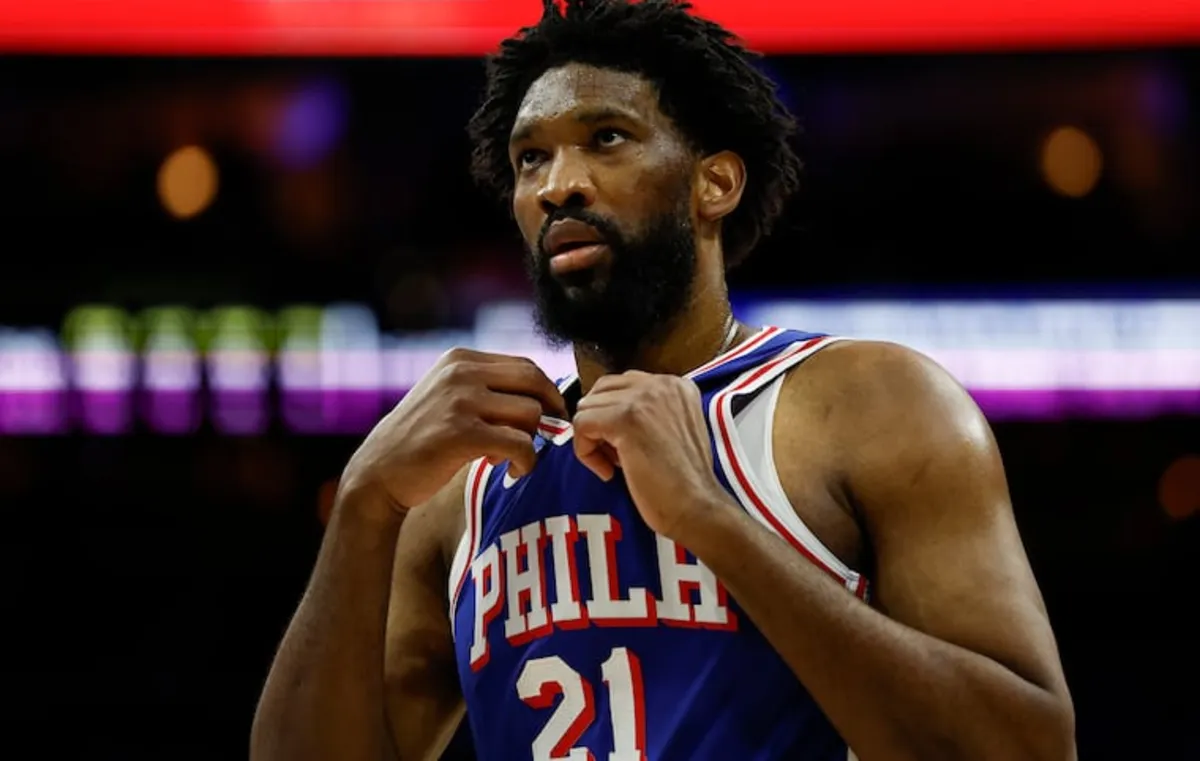
For the first time since becoming the face of The Process, Joel "The Process" Embiid found himself benched. During the fourth quarter on Saturday, Embiid didn't play, as the team performed better without him. The fact that the lineup included Quentin Grimes, Guerschon Yabusele, and Ricky Council IV emphasizes how poorly Embiid played.
While not officially injured, Embiid is experiencing pain in more ways than one. His left knee is a major concern, and the seven-time All-Star is struggling to contribute to the team. Currently, Embiid is averaging 23.8 points, shooting 44.4% from the field, hitting just 29.9% of his three-pointers, and averaging 8.2 rebounds over 19 games. It's arguably the worst season of his nine-year career. Coach Nick Nurse couldn't secure a victory against the depleted Nets with Embiid on the floor, highlighting the severity of the situation.
Things have reached a critical point and could potentially worsen.
The initial strategy was to help Embiid adjust to playing through pain, akin to how Dwyane Wade managed his career. This involved regular knee draining and platelet-rich plasma injections. Experts viewed this as the best rehabilitation method for Embiid's long-term health. However, over the past weeks, Embiid's condition has deteriorated.
NBA sources report Embiid's mood has darkened amid a range of ominous options—potentially costing him the rest of this season and possibly affecting next season. The Sixers' source of concern isn't new, as Embiid has previously dealt with orbital bone and navicular bone fractures. Now, terms like "meniscus replacement," "low-dose radiation therapy," and "osteotomy" hover ominously.
The procedures under consideration are described as "radical" given the routine nature of the initial injury. The situation has spiraled, turning a straightforward recovery into a complex challenge. Medical experts consulted by The Inquirer indicate that these procedures may require six months to a year for full recovery, with potential long-term limitations.
After Saturday's game, Embiid iced his knee, which had been repaired last winter. He seemed to aggravate the knee during the third quarter. By Sunday, the swelling and soreness prompted the team to order new imaging tests. Although Embiid is listed as "questionable" for Monday's game against the Bulls, sources say he's unlikely to play anytime soon.
Embiid hinted at a possible need for further surgery, a stance he reiterated after the Sixers' recent loss to the Celtics. However, until this weekend, another surgery wasn't seriously considered. Factors such as playing in the Olympics, arriving at training camp in less than optimal shape, and a Christmas Day foot sprain have complicated his recovery.
Dr. Fotios Tjoumakaris, a sports medicine surgeon at Rothman Orthopaedics, explains that recovery often involves managing swelling and allowing the body to adapt to new joint realities. Although not involved in Embiid's treatment, Tjoumakaris' insights align with the Sixers' assessment of Embiid's condition.
The Sixers face a critical decision: whether to tank the season. Shutting down Embiid and possibly Paul George could enhance their draft prospects, given the NBA lottery system. However, doing so risks losing their first-round pick to Oklahoma City unless it lands among the top six picks.
Ultimately, the Sixers' future depends on Embiid's health and ability to adapt. If doctors find that Embiid can adjust to his new normal without surgery, he should do so. Otherwise, the team must focus on preserving Embiid's long-term career, even if it means accepting that his high-flying days are over.